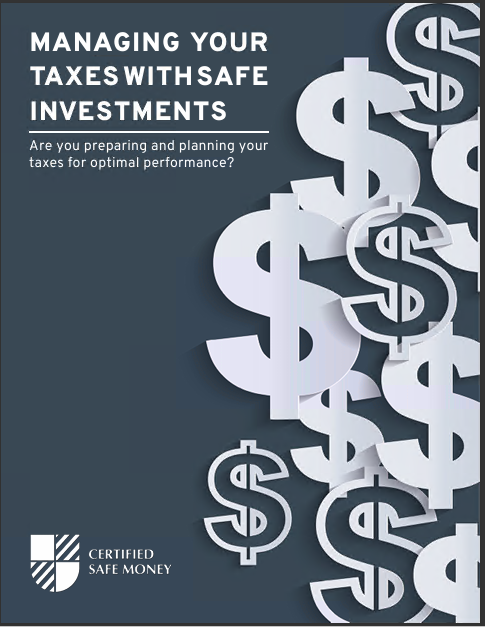Key Takeaways
-
Regularly reassess your life insurance coverage to match your current life situation and avoid overpaying.
-
Understanding the common pitfalls in life insurance can save you money and ensure you’re adequately covered.
The Unseen Cost of Over-Insuring Yourself
Life insurance is a cornerstone of financial planning, providing peace of mind and security. But did you know you might be spending more than necessary without even realizing it? One common way you could be wasting money is by holding more coverage than your circumstances actually require.
When Life Insurance Becomes Excessive
If you’ve experienced significant life changes like paying off your mortgage, your children becoming financially independent, or a substantial increase in your personal wealth, your existing policy might exceed your current needs. Insurance meant to protect dependents from financial hardship becomes unnecessary if your financial obligations decrease over time.
What You Can Do About It
Make it a habit to review your life insurance policies at least every two years or immediately after major life events. If you find yourself with excess coverage, adjusting your policy can substantially lower your monthly premiums and redirect those savings into beneficial investments, such as retirement accounts or high-yield savings.
Paying for the Wrong Type of Policy
Not all life insurance policies are created equal, and choosing the wrong type could lead to unnecessary expenses. Generally, life insurance falls into two categories: term life and whole life (also known as permanent life insurance). Each serves different purposes, but choosing incorrectly can drain your finances without offering real value.
Term Life Versus Whole Life: Know the Difference
Term life insurance offers coverage for a specific period—usually 10, 20, or 30 years. It’s typically affordable and straightforward, making it an ideal choice for many. Whole life, on the other hand, covers you for life and accumulates a cash value over time. While whole life sounds appealing, it is significantly more expensive, often costing 5-10 times more per month compared to a term policy.
How to Choose Wisely
If your goal is solely to protect your loved ones financially during a specific period (like raising children or paying off a mortgage), term insurance generally offers better value. Conversely, whole life might be more suitable if your estate planning needs are complex or if you’re seeking long-term investment through your policy’s cash value component. Evaluate your objectives carefully to avoid wasting money.
Ignoring the Hidden Fees in Life Insurance Policies
Another subtle way you might unknowingly waste money is by overlooking hidden fees embedded in your life insurance policy. These fees, often described in vague terms, can significantly increase your overall costs.
The Sneaky Costs Lurking in Your Policy
Common hidden fees include administrative charges, policy fees, surrender charges (fees for canceling your policy early), and investment management fees for policies with cash value. Although these fees might seem minor individually, they add up considerably over the life of the policy.
Uncovering and Minimizing Hidden Fees
Always ask for a detailed breakdown of all fees before buying any policy. If you already have a policy, request an annual statement clearly outlining all costs involved. If these fees seem excessive, consider shopping around for more transparent alternatives or negotiate lower costs directly with your insurer.
Forgetting to Shop Around Regularly
If you haven’t compared life insurance rates since you initially bought your policy, there’s a strong chance you’re missing out on better deals elsewhere. The insurance market evolves continuously, and the policy you secured several years ago may no longer represent the best value.
Why Loyalty Doesn’t Always Pay
Many insurers rely on customer inertia, assuming you won’t bother checking competitors’ rates after your initial purchase. While loyalty can have its perks in some financial sectors, life insurance typically rewards proactive consumers. You might find more comprehensive coverage at lower premiums simply by regularly comparing options.
Establish a Shopping Routine
Aim to reassess your life insurance at least every three years. This timeline strikes a good balance, allowing sufficient policy maturation while still frequent enough to capture better opportunities. Use this time to evaluate your current provider against competitors and see if you’re still getting the most competitive rate possible.
Better Ways to Invest Your Savings
If you find yourself saving money after addressing these common pitfalls, what should you do with the extra cash? Instead of leaving it idle, consider safe money investments to boost your financial security further.
High-Yield Savings Accounts
High-yield savings accounts offer competitive interest rates with virtually no risk. They’re ideal for building emergency funds, ensuring quick access to cash in unforeseen circumstances.
Retirement Accounts
Contributing additional savings into retirement accounts like a 401(k) or IRA can provide significant long-term benefits through tax advantages and compound growth. Consistently investing these savings can secure your financial future without the risks associated with market volatility.
Bonds and Treasury Securities
If you’re looking for stable returns, bonds and Treasury securities might be ideal. They offer predictable returns and are backed by the government, reducing risk substantially. Bonds with shorter durations typically provide more liquidity and less exposure to interest rate risk, making them a solid, safe investment choice.
Diversified Mutual Funds
For those comfortable with mild risk exposure, diversified mutual funds offer an excellent balance. Spreading investments across various sectors can mitigate risk while providing solid growth opportunities. Over time, these funds often outperform savings accounts and bonds, provided you maintain a diversified, long-term strategy.
Making the Most Out of Your Life Insurance
Ensuring you’re not wasting money on life insurance doesn’t necessarily mean reducing your protection. Instead, it’s about making informed decisions to align your insurance coverage precisely with your current financial needs and personal goals.
Revisit your policy regularly, scrutinize hidden fees, choose the correct policy type, and consistently shop around. When you take these steps, you’ll optimize your coverage and potentially unlock significant savings that can be redirected toward safer, more profitable financial pursuits.
By becoming proactive and well-informed, you’ll achieve a more balanced financial approach—securing your future without paying more than necessary.












